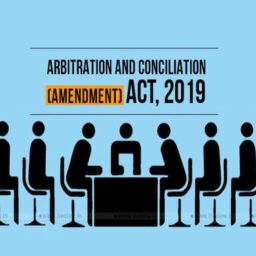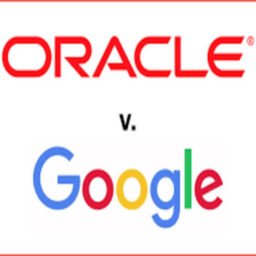INTRODUCTION
To better understand the pitfalls associated with the dispute solving of intellectual property cases, we must have a glimpse at the current climate of intellectual property in India. The Global Innovation Policy Center of the United States Chamber of Commerce released the International Intellectual Property (IP) Index (2020) which analyzed the status of Intellectual property in around 53 economies of the world. India was ranked 40th in this index and has slipped down four positions from its position in this index in 2019, I.E. 36th.
Even though the report did not shy away from praising India for the amelioration in the climate of its Intellectual Property, it was understood that we as a country, India is yet to claim that the target issue relating to the weak enforcement of Intellectual property legislation has been seen to, down to the ground. Matters in the current climate of Intellectual property in India are not that grim since the Government has taken some monumental measures representing a baronial display of determination that is aimed at bringing around a real shift in the perception others to have of India and its Intellectual property scenario.
Loopholes associated with Intellectual property Disputes
The case of Bajaj Auto Ltd. v. TVS Motor Company Ltd[1] is considered a landmark case in the area of Intellectual property law in India. This judgement not only unriddled a two-year-old dispute between two organizations but also set a very reputable case precedent by identifying a significant pattern surrounding the pending cases of Intellectual property. Judged by the Apex Court in the year 2009, the Court identified and shed great light on the issue of pendency of Intellectual property law cases.
The Court in its judgement directed all the Courts to aim for speedy disposal of Intellectual property-related cases by hearing such proceedings on a day to day basis. The Court directed the Courts to give their final judgement in pending Intellectual property cases, within four months from the date when the suit was filed. The important issue raised by the bench in this case about the inefficient disposal of Intellectual property cases can be summed up by the following judgment of the case-
“..experience has shown that in our country, suits relating to the matters of patents, trademarks and copyrights are pending for many years and litigation is mainly fought between the parties over temporary injunction.”[2]
The issue of pendency was not only raised in the case of Bajaj Auto Ltd. v. TVS Motor Company Ltd[3] but was also pointed out by the Apex Court in the case of Shree Vardhman Rice & Gen Mills v. Amar Singh Chawalwala,[4] where the judgment read as –
“Without going into the merits of the controversy, we are of the opinion that the matters relating to trademarks, copyrights and patents should be finally decided expeditiously by the Trial Court instead of merely granting or refusing to grant injunction.”[5]
This judgement contributed to the understanding of the major loophole in the realm of Intellectual property disputes and that was the pendency caused due to the parties, involved in litigation, continuing to fight regarding injunctions, year after year. This ultimately led to cases remaining unsolved since the actual dispute never could come out into the light.
The need to focus on IP disputes
From these two important case precedents, we can easily infer the predicaments associated with the above scenario of litigation for intellectual property related disputes. Intellectual property rights are indispensable, especially in the business based economy of the country. The importance of these rights is not specifically limited to a particular scale of business. For a better understanding of this claim, let’s assume a small scale business that has just ventured into a certain business. Since the business is still at the novice stage, it has a limited pool of resources.
If such a business has managed to invent a product or a design or a logo and the same has been infringed by another company, we can tell that the stakes are high for this company since the infringement, if not checked in time can lead to a huge loss in income of the company which can most probably raise a question mark on the future that the company holds. Now, if we consider a large scale business with a greater pool of resources looking to expand its operations and take it overseas, the company in this case can continue selling its Intellectual property (IP) protected products with protected logos and designs, with no hesitation. The absence of Intellectual property protection for this business can result in a huge roadblock in its expansionary activities.
Alternate Dispute Resolution in IPR disputes
From our understanding of the loopholes that are associated with Intellectual property disputes, we can stand in the shoes of the parties that are involved in the process of litigation for these disputes and understand their quandary where they either need to put their business at risk and bear losses or reluctantly agreed to fiddle away, massive amounts of money as well as time, once they are involved in the court proceedings
Section 89 of the Code of Civil Procedure, 1908 entails within itself the power of the Civil Court to refer matters which it deems capable of settlement ( accepted by both parties), to alternate methods of dispute resolution including arbitration, mediation, conciliation and judicial settlement.
Advantages of using ADR mechanism to solve intellectual disputes
- Increased effectiveness- Through ADR, the parties get to choose a set way of dispute resolution like arbitration or mediation. Since the parties choose their preferred mechanism, the chances of a smoother process are increased and thus increased effectiveness can be promised by resorting to ADR.
- Increased security/confidentially- Parties in an ADR mechanism are also offered a very high level of confidentiality which helps them keep their expectations, terms and other sensitive information on the table, without the hesitation of the same leaking out to the public.
- No bound to expertise- The parties that choose an ADR mechanism are often free to choose their arbitrator/ mediator. Since they can select the same from their own free will, the parties can choose experts in the fields to handle the dispute. Thus making the process smoother and more effective.
The current stance of India on ADR and IPR disputes
Talking about the current stance of India about the applicability of ADR mechanisms to better solve disputes that are related to Intellectual property, the landmark case of Booz-Allen & Hamilton Inc v. SBI Home Finance Ltd. & Ors[6] needs to be discussed. In this case, the Supreme Court very clearly laid down the test to different issues that are arbitrable. The Court said that disputes regarding the right to personam are arbitrable while those about the right to rem are not and they need to be bought to public tribunals and Courts for settlement.
Another important judgment that is worth mention here is that of A. Ayyasamy v. A. Paramasivam & Ors where even though the Court held disputes regarding trademarks, copyright and patents as in-arbitrable, the same cannot be seen as a substantive judgement since the same was said only as of the obiter dicta of the judgment. Hence the law laid down by the judgement of Booz-Allen & Hamilton Inc v. SBI Home Finance Ltd. & Ors. holds value as it focuses more on the real circumstances of the suit by relying on the kind of claim made in a suit.
Conclusion
There has been an evident hike in the number of cases related to Intellectual Property disputes in India. In times like these, we need alternative methods of dispute resolution to share the load of Courts which are already consumed with backlogs and pending cases. Any kind of delay in Intellectual Property cases can put the parties, associated with them, in a very worrisome quandary and can limit their escape routes, close to zero.
It is thus the need of the hour for ADR methods to be accepted by the parties and to be promoted by Courts, wherever, there is some scope for settlement.
Author(s) Name: Anushaka Sharma (OP Jindal Global University, Sonipat)
References:
[1] Bajaj Auto Ltd. v. TVS Motor Company Ltd, 2008 (36) PTC 417 (Mad) at p. 439.
[2] Bajaj Auto Ltd. v. TVS Motor Company Ltd, 2008 (36) PTC 417 (Mad) at p. 439.
[3] Bajaj Auto Ltd. v. TVS Motor Company Ltd, 2008 (36) PTC 417 (Mad) at p. 439.
[4] Shree Vardhman Rice & Gen Mills v. Amar Singh Chawalwala (2009) 10 SCC 257.
[5] Shree Vardhman Rice & Gen Mills v. Amar Singh Chawalwala (2009) 10 SCC 257.
[6] Booz Allen Hamilton v. SBI Home Finance (2011) 5 SCC 532.














